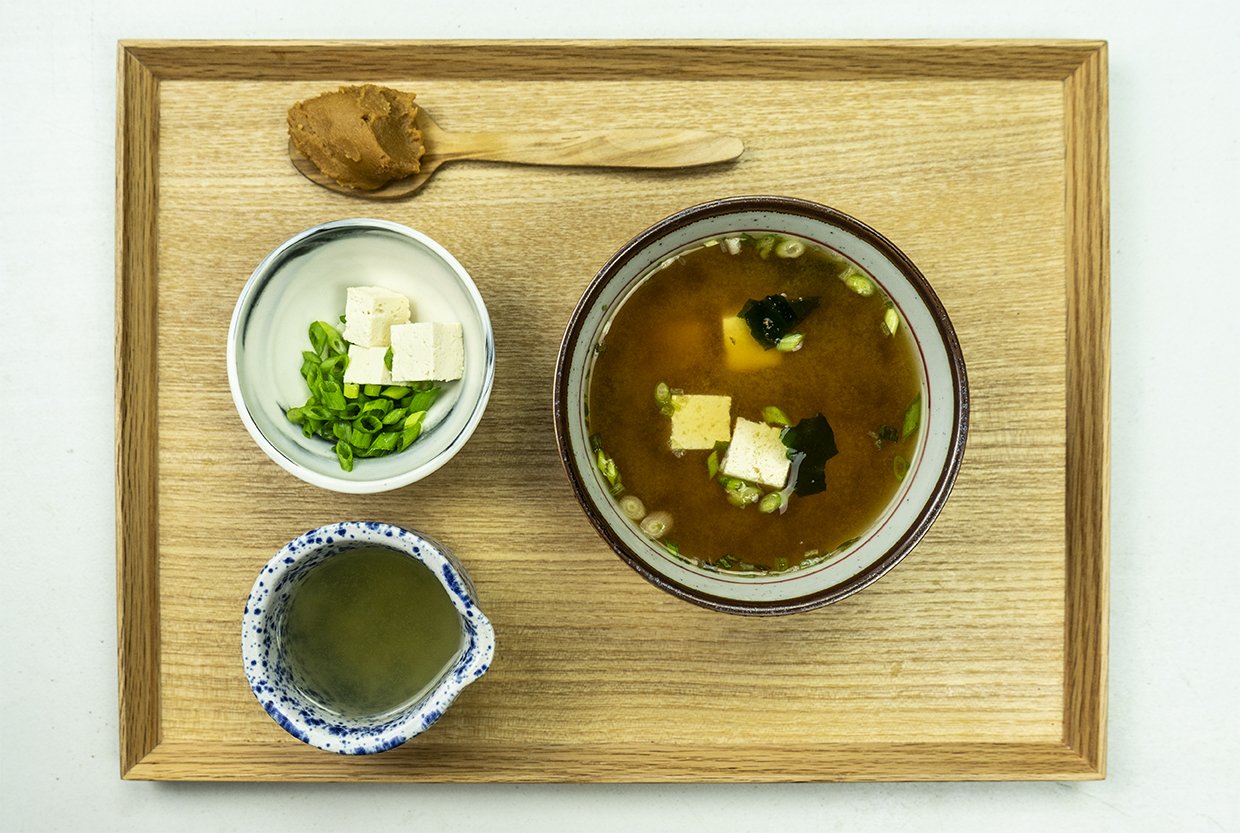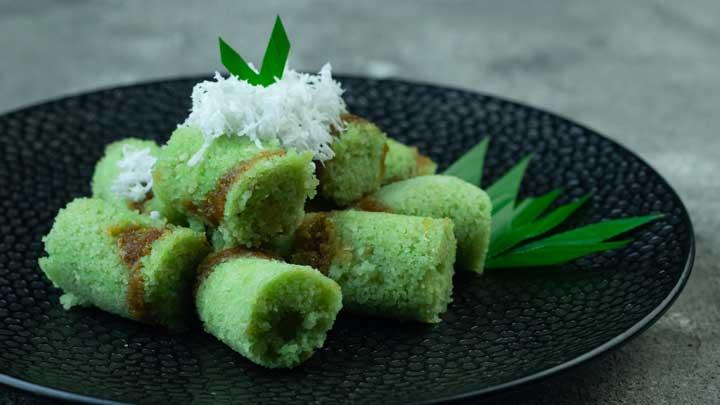Miso soup (味噌汁, miso shiru) is one of Japan’s most beloved and iconic dishes, enjoyed as a staple part of Japanese meals. This nutritious, umami-rich soup is made from miso paste (fermented soybean paste), dashi (Japanese broth), and various ingredients such as tofu, seaweed, and green onions.
Served in households and restaurants across Japan, miso soup is more than just a side dish—it is a symbol of comfort, tradition, and health benefits. With its probiotic-rich miso and nourishing broth, miso soup is believed to aid digestion, boost immunity, and promote overall well-being.
In this guide, we will explore:
- The history and cultural significance of miso soup
- Health benefits of miso soup
- Key ingredients that make miso soup unique
- Step-by-step authentic miso soup recipe
- Variations of miso soup across Japan
- How to pair miso soup with Japanese meals
The History & Cultural Significance of Miso Soup
Miso soup has been a staple in Japanese cuisine for over 1,000 years. Originating from China, miso (fermented soybean paste) was introduced to Japan around the 7th century, where it evolved into a fundamental component of Japanese cooking.
Samurai & Miso Soup
During the Kamakura Period (1185-1333), samurai warriors consumed miso soup as a quick and nourishing meal, fueling them for battle. The soup was easy to prepare and provided essential nutrients, making it a crucial part of samurai diets.
Miso Soup in Modern Japanese Culture
Today, miso soup is:
- A daily part of Japanese breakfasts, lunches, and dinners.
- Served as a side dish in traditional multi-course meals (kaiseki).
- Believed to have healing and restorative properties.
📌 Fun Fact: In Japan culinary, it is common for families to have their own unique miso soup recipes, often passed down through generations.
Health Benefits of Miso Soup 🏥🍵

Miso soup is not only delicious but also packed with nutrients!
- Rich in Probiotics – The fermentation process in miso produces gut-friendly bacteria, aiding digestion and improving gut health.
- Boosts Immunity – Contains antioxidants, vitamins (B, K), and minerals (zinc, manganese, copper) to strengthen the immune system.
- Good for Heart Health – The soy protein in miso can help reduce bad cholesterol (LDL) and lower blood pressure.
- Aids in Detoxification – Seaweed (wakame and kombu) contains iodine and chlorophyll, helping to cleanse the body of toxins.
- Low in Calories & High in Nutrients – Ideal for a healthy, balanced diet.
📌 Did you know? In Japan, miso soup is often called “a drinkable medicine” due to its many health benefits!
Key Ingredients That Make Miso Soup Special
1️⃣ Miso Paste (味噌) – The Heart of Miso Soup
Miso paste is made from fermented soybeans, salt, and koji (a fermentation culture). The type of miso used affects the flavor, color, and richness of the soup.
- White Miso (Shiro Miso) – Mild, slightly sweet, best for light miso soups.
- Red Miso (Aka Miso) – Stronger, saltier, and deeper in flavor.
- Mixed Miso (Awase Miso) – A blend of white and red miso, offering a balanced taste.
📌 Pro Tip: Never boil miso paste—it destroys probiotics! Instead, stir it into warm broth at the end of cooking.
2️⃣ Dashi (出汁) – The Umami-Rich Broth
Dashi is the base of miso soup, providing its signature umami flavor. It is traditionally made by simmering:
- Kombu (kelp) – Adds a deep oceanic umami taste.
- Bonito flakes (katsuobushi) – Dried, fermented tuna shavings for a smoky depth.
- Shiita ke Mushrooms – A vegan option that adds earthiness.
📌 Shortcut Option: Instant dashi powder is available for quick preparation!
3️⃣ Classic Toppings & Add-ins
- Tofu – Soft or firm tofu adds protein and texture.
- Wakame (Seaweed) – Provides a mineral-rich, slightly chewy texture.
- Green Onions (Negi) – Enhances aroma and freshness.
- Daikon Radish & Mushrooms – For extra depth and variety.
📌 Customization: You can also add clams, shrimp, vegetables, or even noodles for a heartier miso soup.
Step-by-Step Authentic Miso Soup Recipe
🛒 Ingredients (Serves 2-3)
- 2 cups water
- 1 tsp dashi powder (or homemade dashi broth)
- 2 tbsp miso paste (white, red, or mixed)
- ½ cup cubed tofu
- 1 tbsp dried wakame (rehydrated in water for 5 min)
- 2 tbsp sliced green onions
🔪 Instructions
Prepare the Dashi Broth
- In a pot, bring 2 cups of water to a gentle simmer.
- Add dashi powder (or homemade dashi broth) and stir.
Add Tofu & Wakame
- Gently add cubed tofu and wakame.
- Let it simmer for 2-3 minutes (do not boil).
Add Miso Paste (Without Boiling!)
- Remove from heat and let the broth cool slightly.
- In a small bowl, mix 2 tbsp miso paste with a few spoons of warm broth until dissolved.
- Stir the dissolved miso back into the soup.
📌 Pro Tip: Straining miso through a fine mesh sieve prevents clumps.
Step 4: Garnish & Serve
✔ Sprinkle chopped green onions on top.
✔ Serve hot with steamed rice, pickles, or grilled fish for a complete Japanese meal.
Regional Variations of Miso Soup in Japan
🥔 Hokkaido-style: Uses butter, potatoes, and corn for a creamy miso soup.
🐟 Kyushu-style: Often includes fish, pork, or chicken for a heartier version.
🍆 Nagoya-style: Features red miso (Hatcho Miso) for an intense umami kick.
📌 Which one would you like to try? Let us know in the comments! 🍜🔥
How to Pair Miso Soup with Japanese Meals
Miso soup is traditionally served as part of a balanced Japanese meal, alongside:
🍚 Steamed Rice (Gohan) – A staple pairing for a full meal.
🍣 Sushi or Sashimi – Complements raw fish dishes.
🐟 Grilled Fish (Yakizakana) – Enhances the umami flavors.
🥒 Japanese Pickles (Tsukemono) – Adds crunch and acidity.
🥢 Tempura or Gyoza – Balances rich fried foods.
📌 Pairing Tip: Miso soup is often served at breakfast in Japan with rice and grilled salmon!
Conclusion: A Simple Yet Powerful Dish
Miso soup is more than just a bowl of broth—it’s a centuries-old tradition, a symbol of comfort, and a powerhouse of nutrition. Whether enjoyed as a simple meal patihtoto starter or customized with your favorite ingredients, miso soup remains one of Japan’s most iconic and nourishing dishes.
💬 Have you tried making miso soup at home? What’s your favorite way to enjoy it? Share your thoughts below! 🍜✨



















